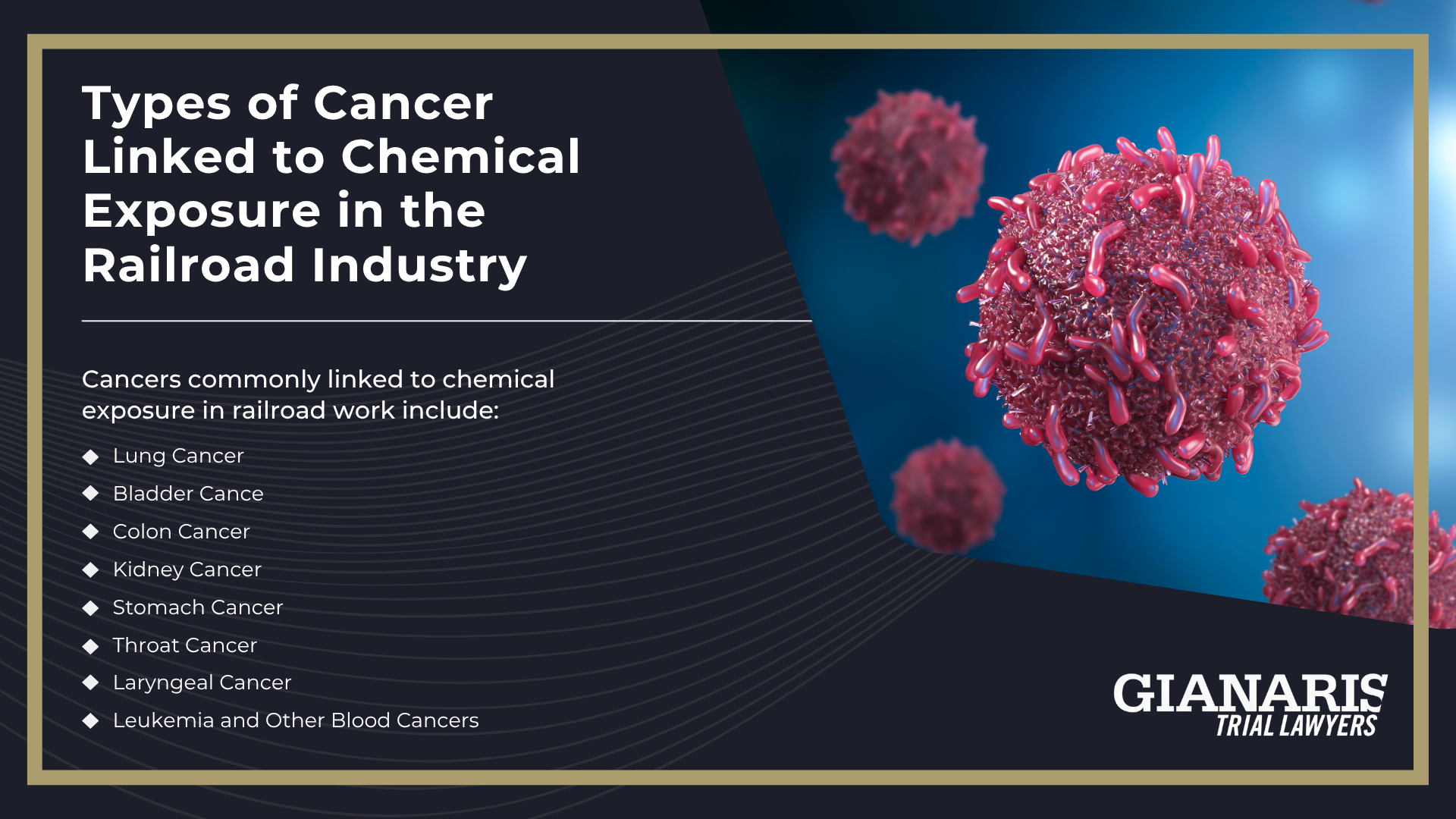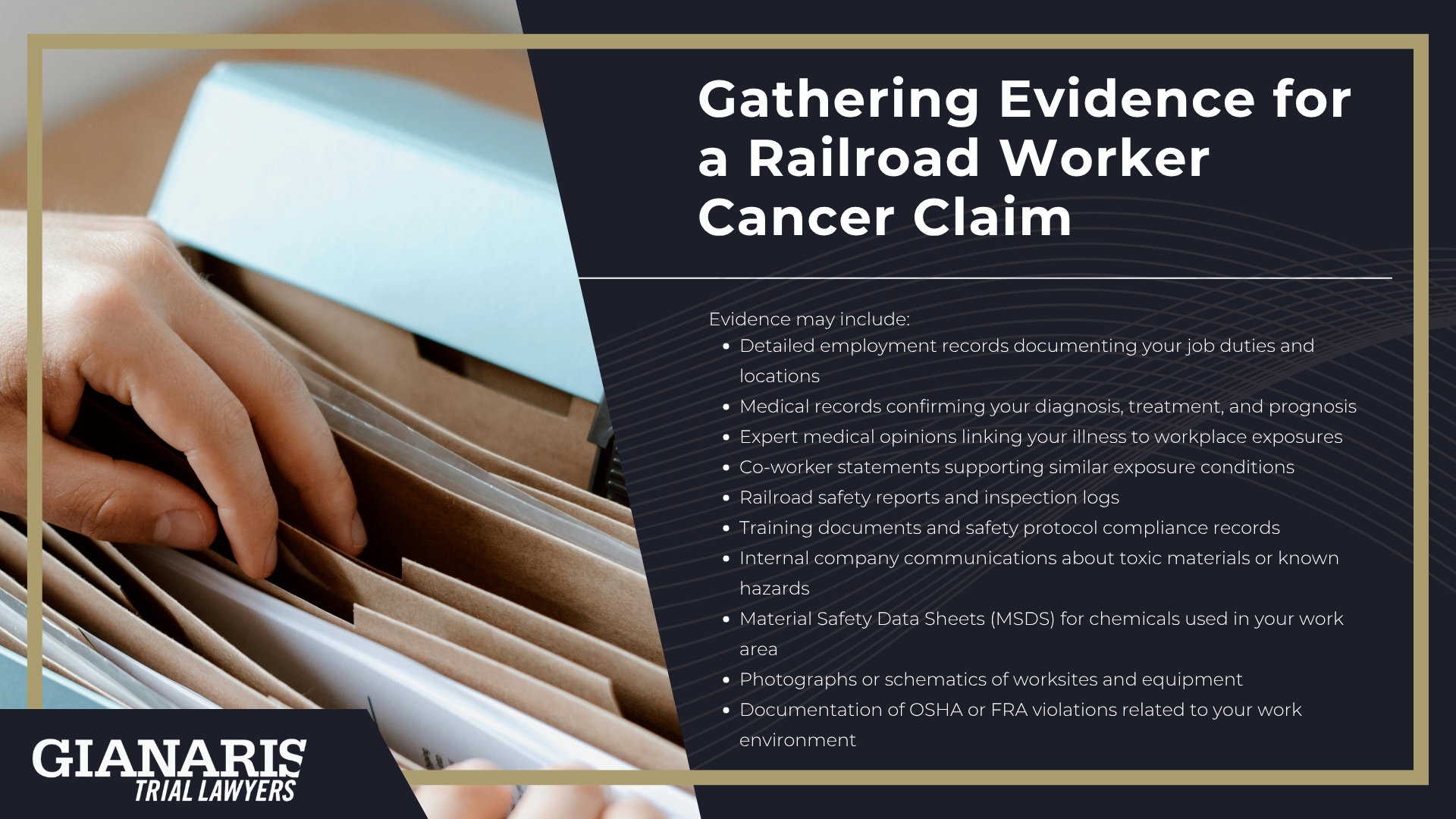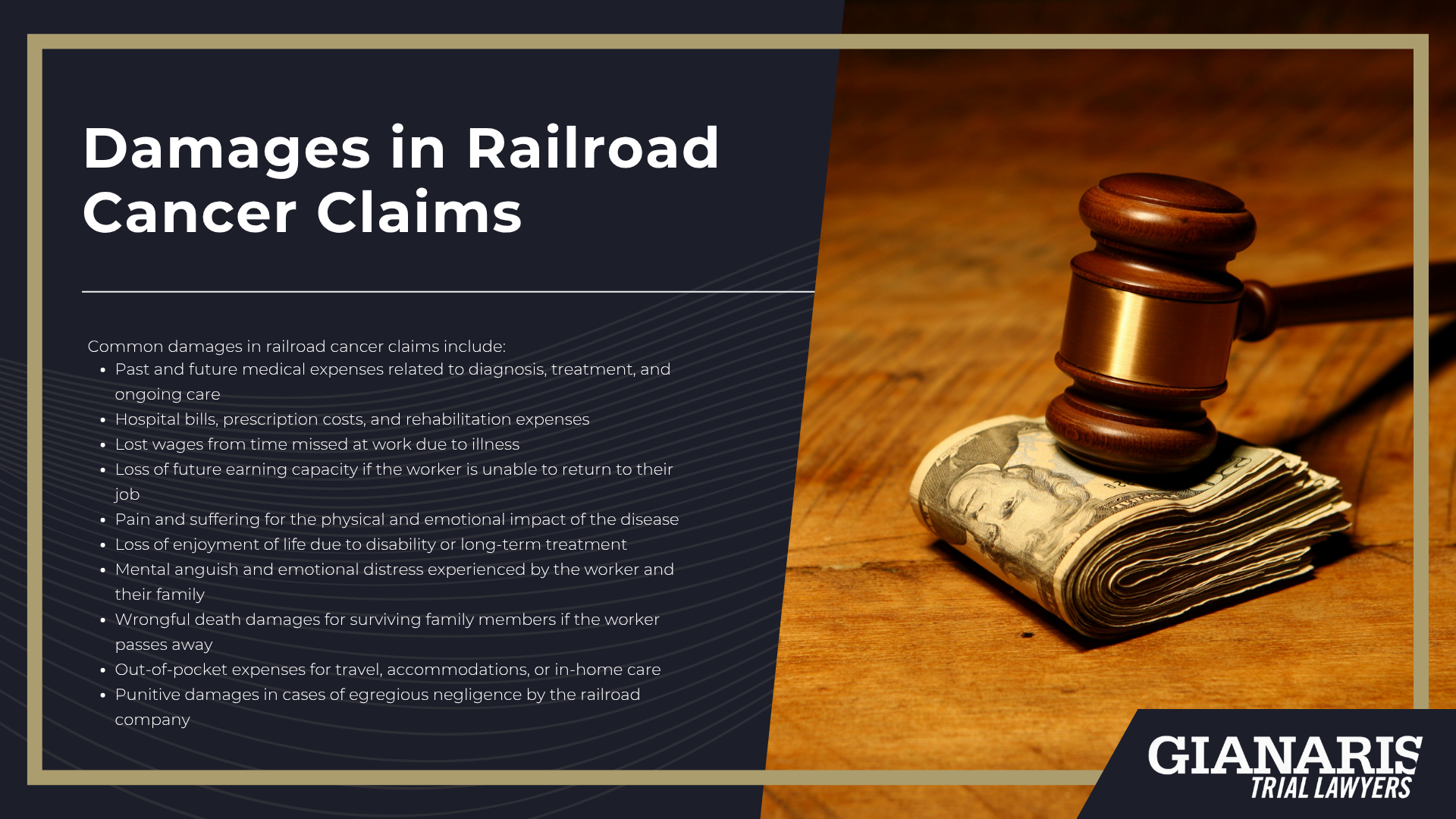Railroad employees—particularly those working in maintenance shops, on tracks, or around diesel engines—have faced prolonged exposure to hazardous substances that are now understood to be capable of causing cancer.
These exposures often occurred daily, without warning or adequate protective measures, and continued over a long period as railroad companies failed to update safety protocols.
Diesel exposure remains one of the most significant threats; exhaust from diesel engines contains ultrafine particles and toxic gases that penetrate deep into the lungs and have been strongly associated with lung disease and various cancers.
Shop workers and sheet metal workers also frequently handled lead paint, degreasers, and solvents containing benzene—another known carcinogen linked to blood cancers like leukemia and multiple myeloma.
Track laborers and other workers encountered weed killers, creosote-treated railroad ties, and crystalline silica dust while maintaining infrastructure, often breathing in harmful particles day after day.
These cumulative exposures have led to a growing number of railroad employees receiving a cancer diagnosis later in life.

Common toxic exposures in railroad work linked to cancer include:
- Diesel Exhaust – Inhaled by engineers, brakemen, and conductors working near running locomotives and idling trains
- Benzene – Found in cleaning solvents, degreasers, and fuels used by shop workers and carmen
- Asbestos – Used in insulation, brake pads, and pipe coverings handled by machinists and electricians
- Crude Oil and Residues – Present in tank car maintenance and derailment cleanup, contributing to skin and organ cancers
- Silica Dust and Crystalline Silica – Disturbed during ballast and track work, posing severe lung cancer and silicosis risks
- Welding Fumes – Emitted during cutting and fabrication tasks by sheet metal workers and welders
- Lead Paint – Common in older locomotives and rolling stock, linked to neurological damage and cancer
- Herbicides and Weed Killers – Sprayed along rail lines, exposing track workers to chemicals tied to blood cancers
- Other Chemicals – Including lubricants, degreasers, and thinners, all of which may contain carcinogenic compounds
Over years—or even decades—these exposures add up, quietly increasing the cancer risk for workers in nearly every railroad job category.
Because many of these substances are invisible or odorless, railroad employees were rarely aware of the danger until long after the damage was done.
Even short-term exposure to high concentrations can be harmful, but it is prolonged exposure without protection that poses the greatest threat.
Unfortunately, many railroad workers received little to no information about these risks until after they had already developed symptoms or received a cancer diagnosis.
Today, these individuals and their families are left coping with the physical, emotional, and financial toll of occupational illness.
Types of Cancer Linked to Chemical Exposure in the Railroad Industry
Long-term exposure to dangerous chemicals in railroad environments has been linked to a wide range of cancers affecting various organ systems.
Railroad personnel working with diesel fuel and diesel fumes, silica sand, and other industrial substances face an elevated risk of developing lung cancer, bladder cancer, and other serious diseases.
These cancers are often the result of repeated, daily exposure to toxic materials over many years, especially in enclosed workspaces or poorly ventilated areas.
The presence of multiple risk factors—such as exposure to diesel exhaust, crystalline silica, and solvents—can compound the chances of cancer formation.
Numerous studies have found that cancer patients with a history of railroad employment show consistent patterns of occupational exposure to known carcinogens.

Cancers commonly linked to chemical exposure in railroad work include:
- Lung Cancer – Strongly associated with prolonged exposure to diesel fumes, silica dust, and welding fumes
- Bladder Cancer – Often linked to contact with benzene and petroleum-based solvents used in rail maintenance
- Colon Cancer – Seen in workers exposed to diesel exhaust and chronic inflammation from inhaled particulates
- Kidney Cancer – Associated with chemical exposure from lubricants, thinners, and diesel byproducts
- Stomach Cancer – Tied to ingestion or inhalation of industrial dust and chemical residues over long periods
- Throat Cancer – Linked to exposure to diesel fumes and airborne particulates in confined areas
- Laryngeal Cancer – Found in workers exposed to a combination of diesel exhaust, secondhand smoke, and chemical vapors
- Leukemia and Other Blood Cancers – Often caused by long-term benzene exposure in shops and maintenance yards
These cancers often take years or even decades to develop, making it difficult for workers to immediately connect their illness to their former job.
However, medical research has made it increasingly clear that railroad workers face higher cancer rates than the general population due to workplace exposures.
Scientific Evidence on Railroad Chemical Exposure and Cancer Risk
Extensive research conducted by organizations like the National Institute for Occupational Safety and Health (NIOSH) has confirmed the link between prolonged chemical exposure in railroad environments and serious respiratory and oncological diseases.
Diesel exhaust, benzene, asbestos, and other substances commonly encountered by railroad workers are now classified as known carcinogens.
Studies show that workers exposed to diesel fumes over long periods face a significantly elevated risk of lung cancer and other respiratory illnesses.
Chronic obstructive pulmonary disease (COPD) has also been closely tied to long-term inhalation of fine particulate matter in rail yards and locomotive cabs.
Regulatory agencies, including the Occupational Safety and Health Administration (OSHA), have issued warnings and guidelines regarding these hazards, although enforcement has historically been inconsistent across the industry.
Despite growing scientific consensus, many workers were never warned of the dangers or given proper protective equipment.
Anyone who has worked in the railroad industry and developed cancer or a serious respiratory condition should seek medical attention immediately and consult a qualified attorney to explore legal options.








